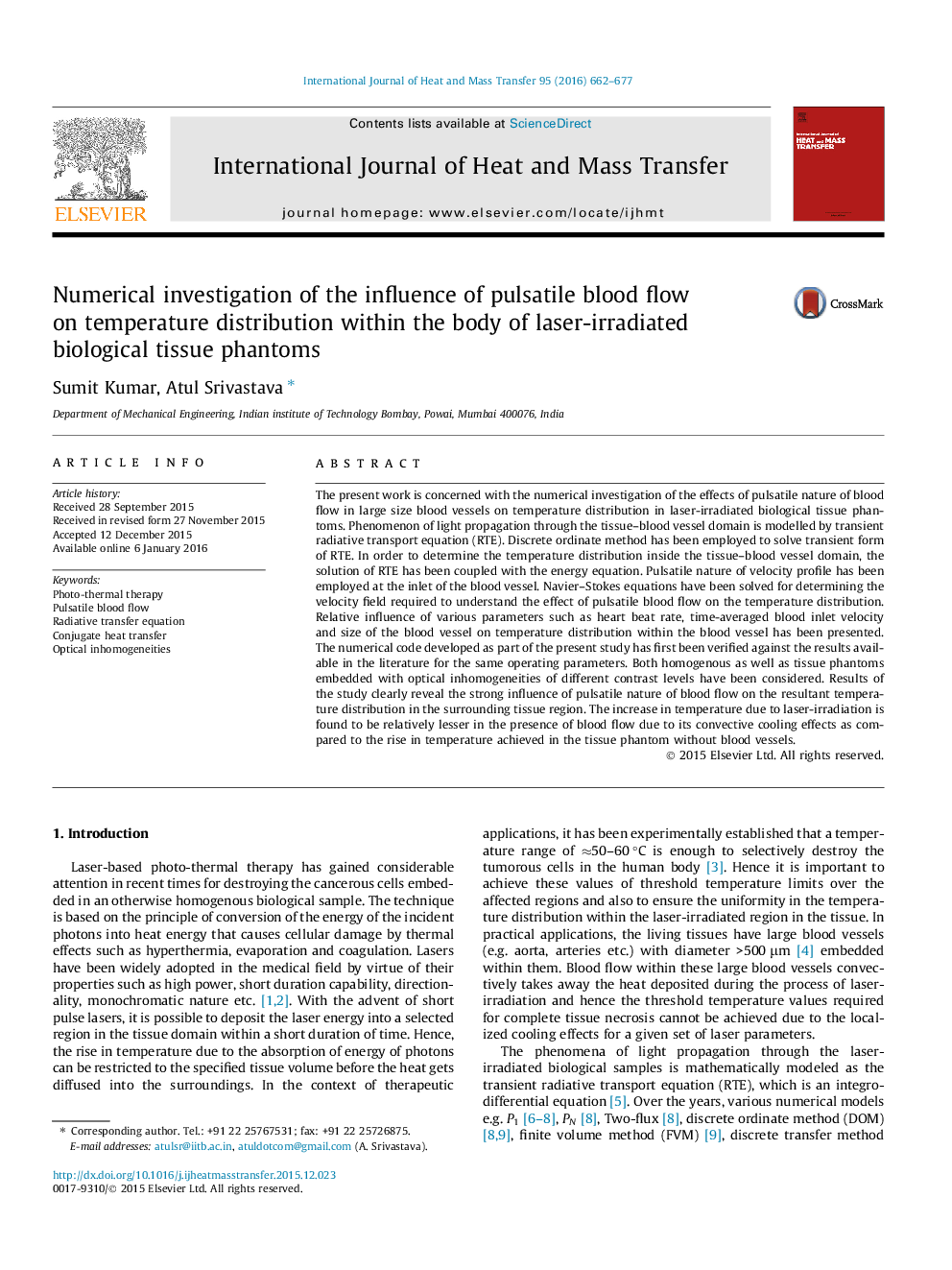| Article ID | Journal | Published Year | Pages | File Type |
|---|---|---|---|---|
| 656666 | International Journal of Heat and Mass Transfer | 2016 | 16 Pages |
•Coupling of transient RTE with Navier Stokes and energy equations.•Conjugate heat transfer.•Effect of pulsatile blood flow on thermal response of biological tissue phantoms.•Optical inhomogeneities of various contrast levels and the associated thermal field.•Optimization of laser parameters in the context of photo thermal therapy.
The present work is concerned with the numerical investigation of the effects of pulsatile nature of blood flow in large size blood vessels on temperature distribution in laser-irradiated biological tissue phantoms. Phenomenon of light propagation through the tissue–blood vessel domain is modelled by transient radiative transport equation (RTE). Discrete ordinate method has been employed to solve transient form of RTE. In order to determine the temperature distribution inside the tissue–blood vessel domain, the solution of RTE has been coupled with the energy equation. Pulsatile nature of velocity profile has been employed at the inlet of the blood vessel. Navier–Stokes equations have been solved for determining the velocity field required to understand the effect of pulsatile blood flow on the temperature distribution. Relative influence of various parameters such as heart beat rate, time-averaged blood inlet velocity and size of the blood vessel on temperature distribution within the blood vessel has been presented. The numerical code developed as part of the present study has first been verified against the results available in the literature for the same operating parameters. Both homogenous as well as tissue phantoms embedded with optical inhomogeneities of different contrast levels have been considered. Results of the study clearly reveal the strong influence of pulsatile nature of blood flow on the resultant temperature distribution in the surrounding tissue region. The increase in temperature due to laser-irradiation is found to be relatively lesser in the presence of blood flow due to its convective cooling effects as compared to the rise in temperature achieved in the tissue phantom without blood vessels.
